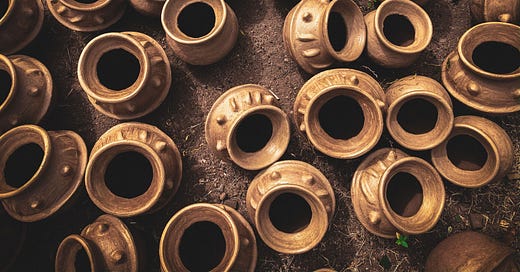I used to be confused about why painted pottery was so often by archaeologists when investigating ancient peoples. Then I realized:
it's less likely to degrade than a lot of other materials
it's used for food storage and transportation so it's super common, it's not just "art"
painted amphorae are functionally the equivalent of tractor trailer trucks with …
Keep reading with a 7-day free trial
Subscribe to Manuscriptions to keep reading this post and get 7 days of free access to the full post archives.



